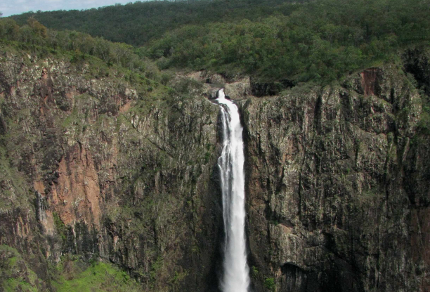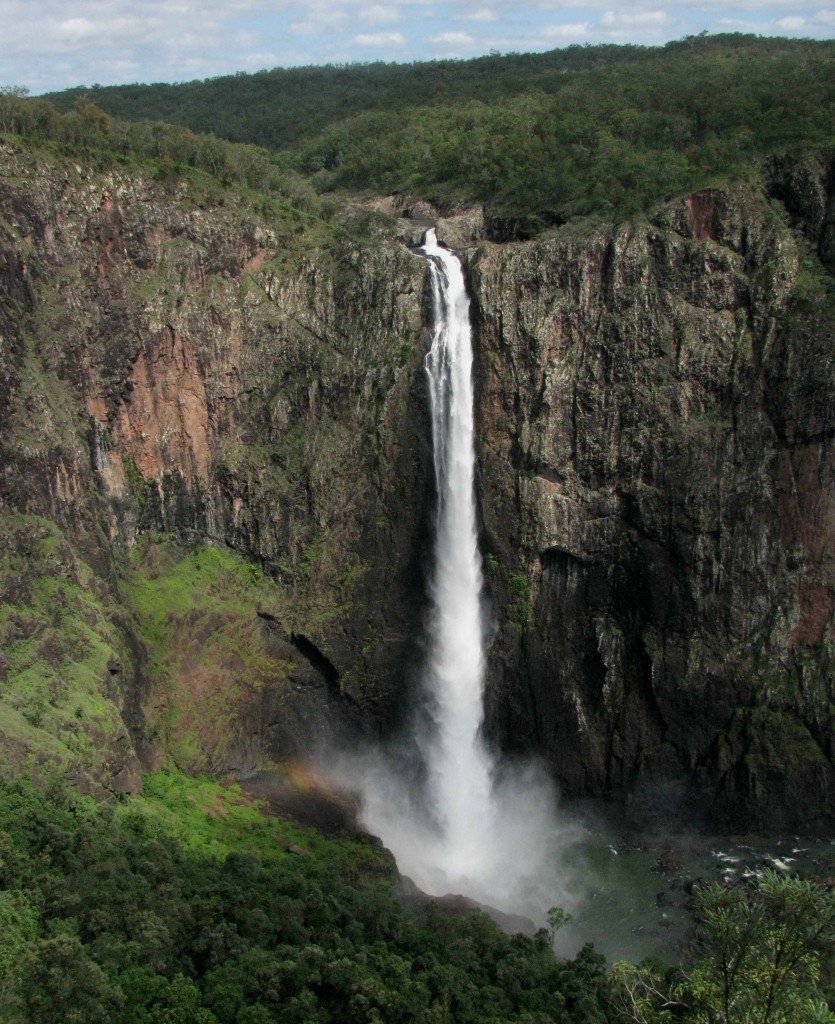
Wallaman Falls, Girringun National Park (© Magi Nams)
Under a mid-morning mix of cloud and sun, Vilis, Janis, and I drove north from Townsville through open savannah woodland and fields of sugarcane to Ingham, and then headed west toward Girringun National Park. More cane surrounded us, but sharp-toothed, forested peaks rose against the sky ahead, with haze blurring distant ranges into softened relief. As we neared the peaks, the cane gave way to open woodland and pine plantations of Lannercost State Forest. Cattle and horses grazed on the verges of the dung-spattered road and wandered across it at will.
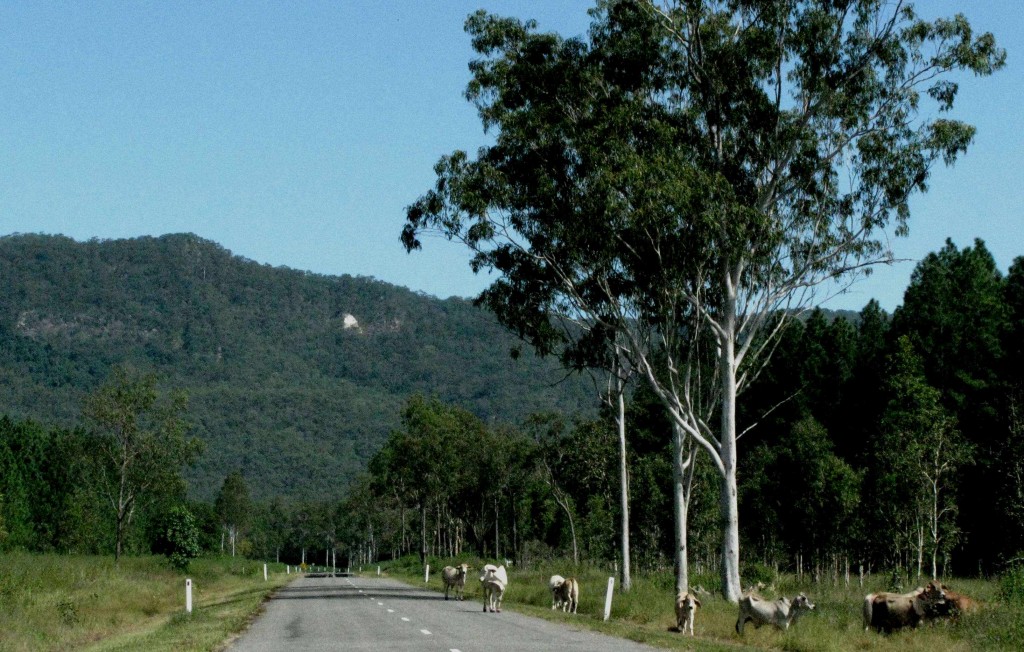
Cattle on Road through Lannercost State Forest (© Magi Nams)
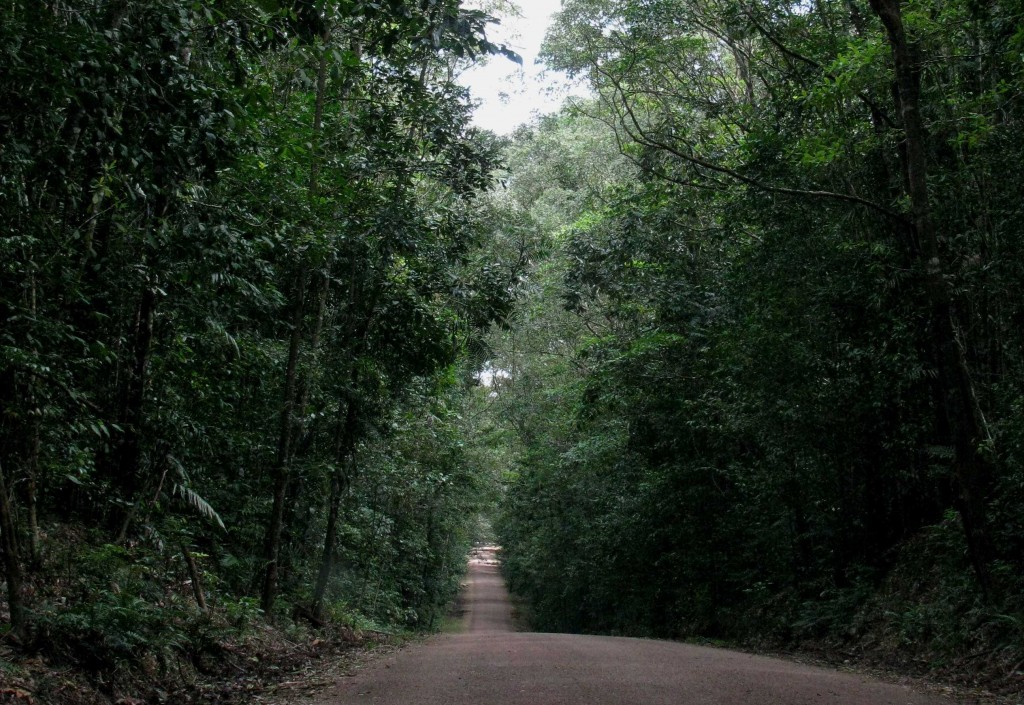
Road through Girringunn National Park Rainforest (© Magi Nams)
Within Girringun National Park, the road narrowed and led us on a steep climb, with open woodland and rainforest battling for space on the rugged slope beside us. We topped out on a long ridge cloaked with rainforest, the roadway like a tunnel through the dense vegetation. The air was fresh and cool, and we spotted a roadkilled, medium-sized marsupial with a long, pointed muzzle and brindled fur, which we tentatively identified as a northern brown bandicoot. The shadowed stretch of road along the ridge was posted with cassowary crossing signs, but none of the large, flightless rainforest birds stepped out of the forest into our field of view.
About 55 kilometres west of Ingham, we reached Wallaman Falls lookout, which offered a spectacular view of Australia’s highest single-drop waterfall. From atop a pink granite wall, dark green Stoney Creek spilled over the lip of the cliff in graceful, white tresses that fell 268 metres into a pool at the bottom of the cliff. Water vapour created by the impact of the falls hitting the pool created rainbows that hung in the air at the base of the falls.

Vilis with Flowering Grass-tree (© Magi Nams)
Desiring a closer look at the falls, we hiked to Gorge Lookout through open woodland with grass trees blooming in the understory, and then down into the gorge.
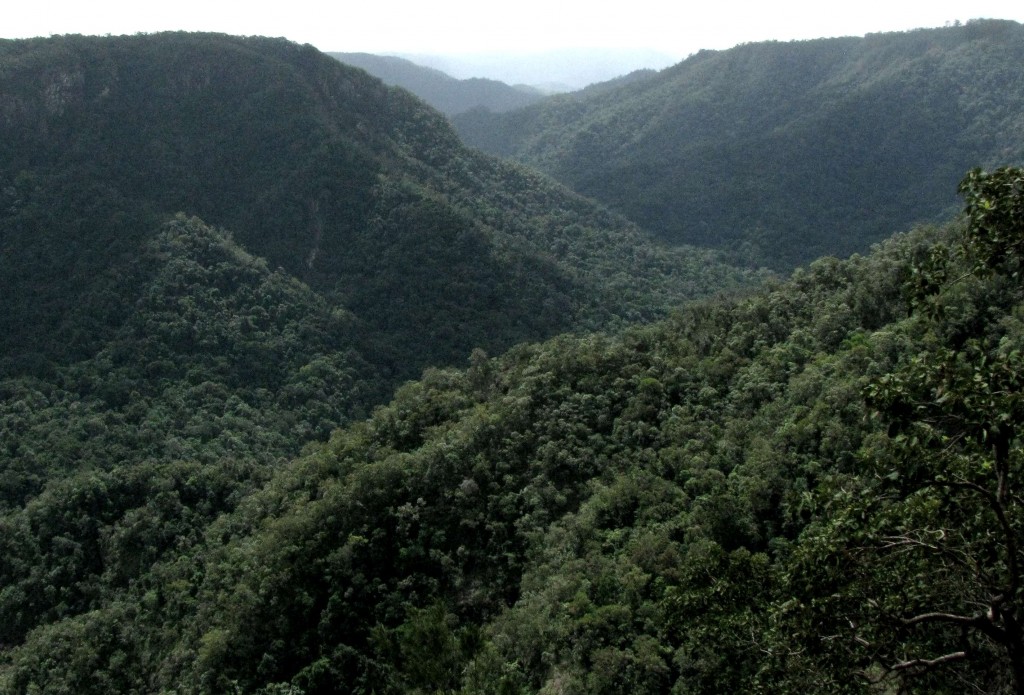
Stoney Creek Gorge in Girringun National Park (© Magi Nams)
Switchbacks zig-zagged for a kilometre down the gorge wall, immersing us in rainforest similar to that at Paluma. Here, though, we weren’t constrained to walking beneath the trees, for on the switchbacks, the forest was above us, below us, all around us. Rather than simply moving through the forest, we felt we were a part of it. We heard rustlings and birds, and Janis spotted two skinks on a rock wall, one with an insect crammed into its mouth.
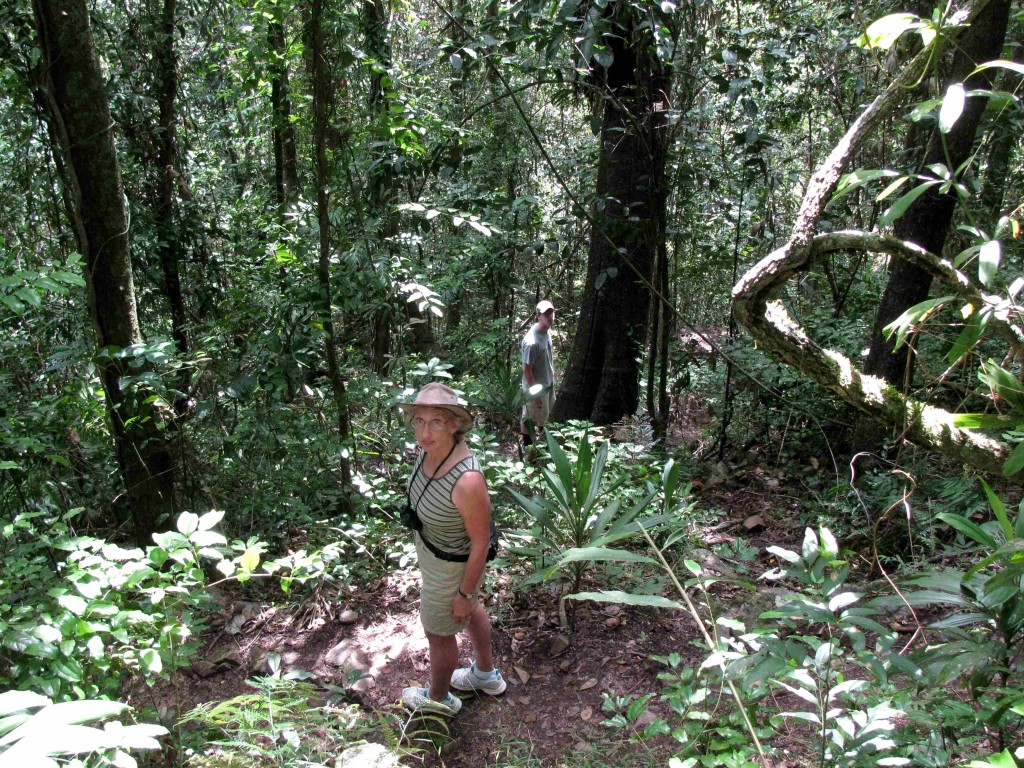
Janis and I on Switchbacks in Girringun National Park Rainforest (© Vilis Nams)
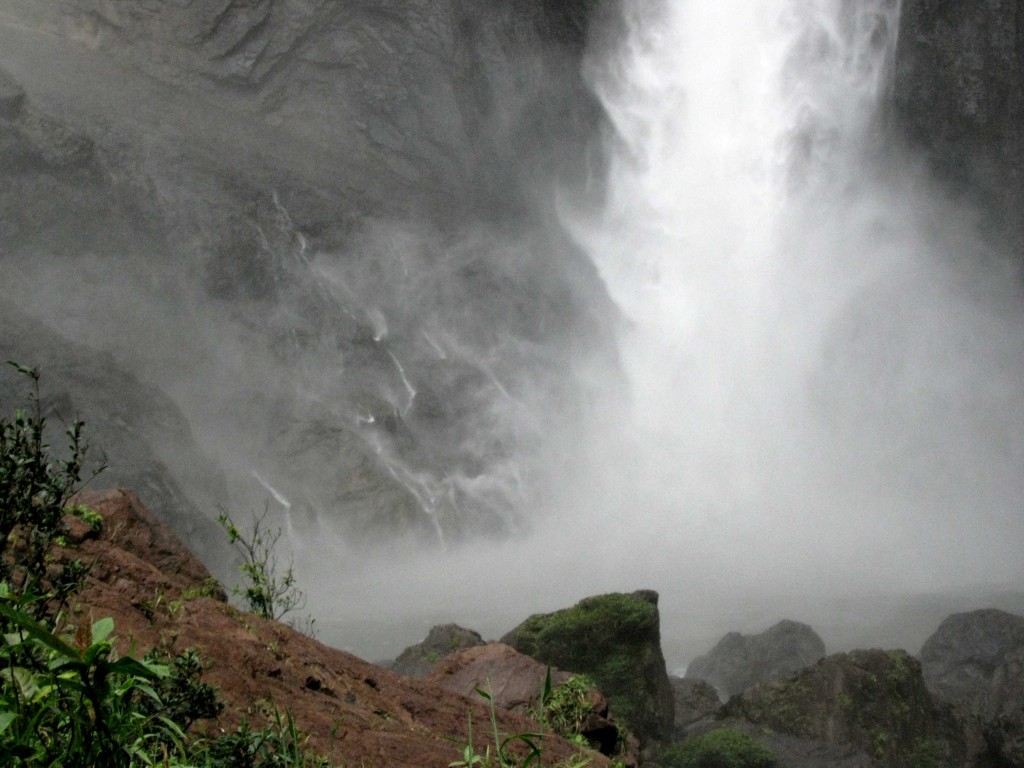
Base of Wallaman Falls (© Vilis Nams)
The gorge track ended at a railed lookout sprayed with mist from the pounding falls. The force of the water hitting the pool was so great that it blasted sheets of spray up onto the lower cliff walls, creating rivulets that ran down into the pool. Red mounds of wet granite jutted up from the creekbed, and the sheer, fractured cliff wall soared above us.
Spattered with spray, we left the falls and climbed the switchbacks from rainforest back into open woodland.

Janis and I on Railed Switchbacks in Open Woodland (© Vilis Nams)
Leaving the falls lookout and track, we drove to the Wallaman Falls campground, parked the Kia, and hiked the first few kilometres of one of Australia’s Great Walks, the 110-kilometre Wet Tropics Great Walk. The Wallaman Falls section of the track initially followed an old road that crossed Stoney Creek and led into and through open forest dominated by she-oaks and mixed eucalypts with a grassy understory. At the creek, we watched saw-shelled turtles swim up from the streambed and hang in the water beside the bridge, their powerful, webbed feet pushing against the water, and spiny tubercles on their necks resembling peculiarly-positioned tusks.
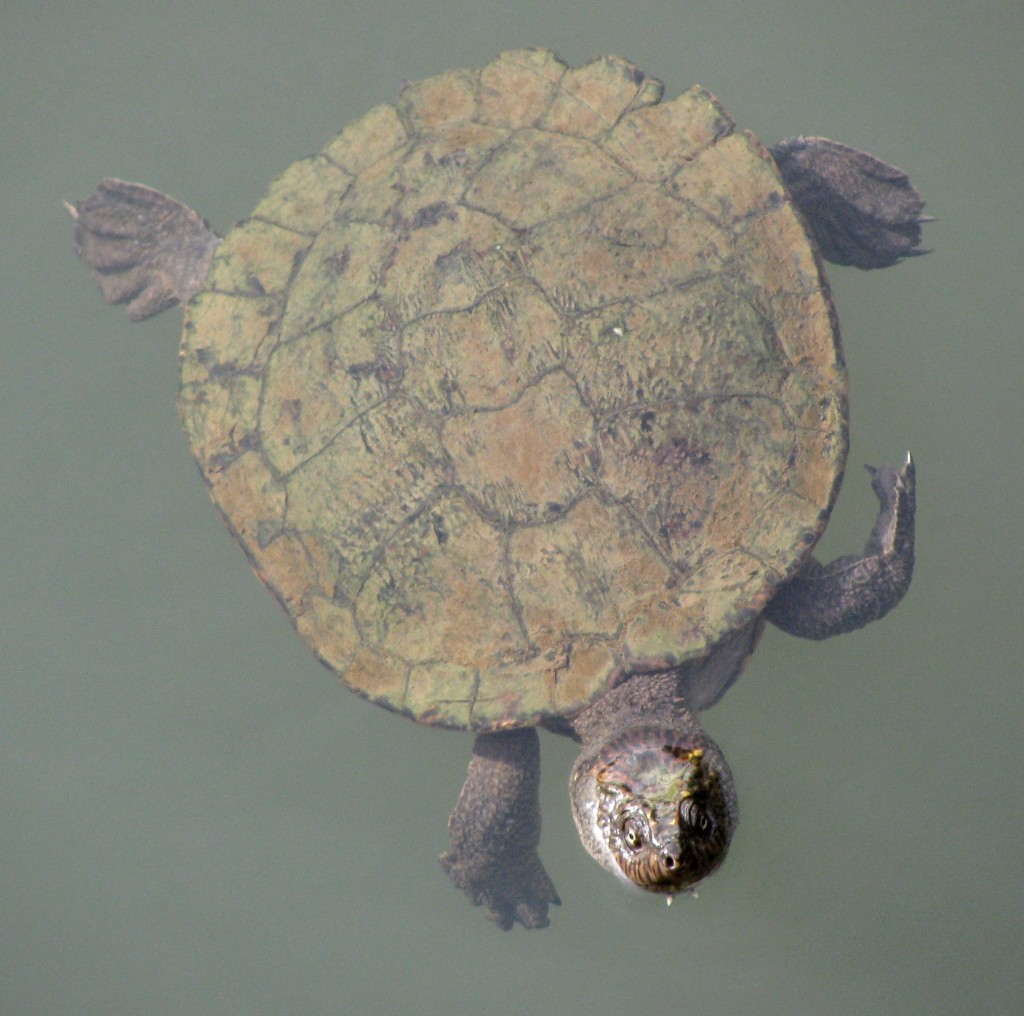
Saw-shelled Turtle in Stoney Creek (© Magi Nams)
Beyond the bridge, the trail was speckled with cow dung, which we had also encountered in the lookout car park. Signs had warned us that the more distant sections of the Wet Tropics Great Walk were closed due to park authorities culling feral cattle that are damaging the vegetation within the park. Farther along on our hike, we spotted a cow and gangly (perhaps recently born) calf on the trail, the calf tottering rather erratically along beside its plodding mother. I noticed old, dilapidated fencing adjacent to part of the track and suggested to Vilis that the open woodland through which we were hiking had likely been pastoral land before being reserved as part of Girringun National Park. We speculated that, when the land was designated as national park, the graziers never got all the cattle out, and the remaining animals provided the seed stock for the feral population roaming the park today.
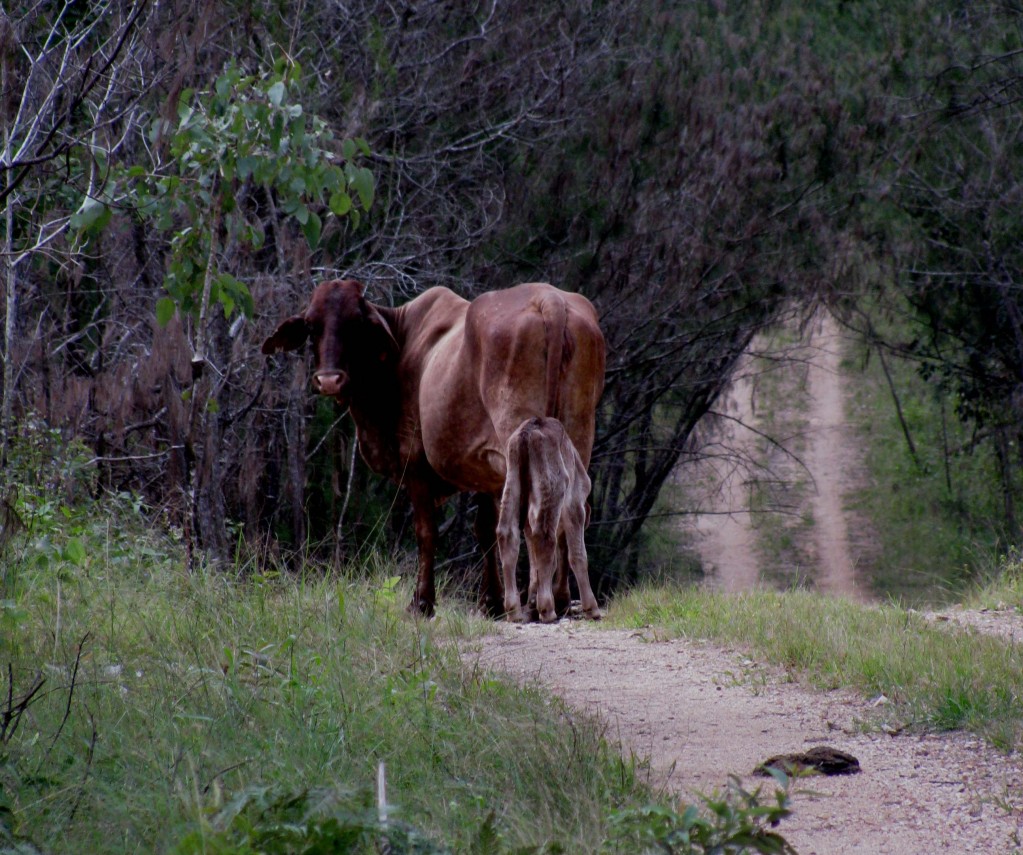
Feral Cattle on Wallaman Falls Section of Wet Tropics Great Walk (© Vilis Nams)
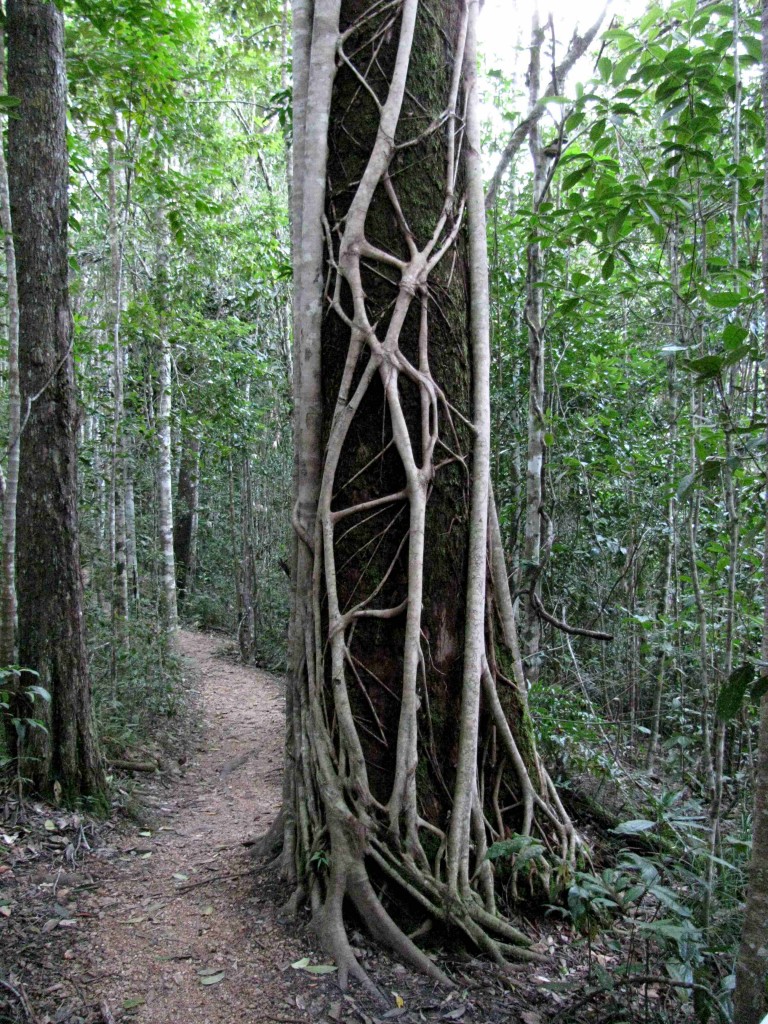
Strangler Fig on Rock Pool Track beside Stoney Creek (© Vilis Nams)
Later, while we walked the shoreline of Stoney Creek before dusk, hoping to spot a platypus in the quiet green water, we noticed feral pig tracks and rootings in the soil beside the creek – another source of damage to the park.
As with the cassowaries, we were disappointed in our hunt for platypuses; however, we did observe several red-legged pademelons – small macropod cousins of kangaroos – and hiked past a stunning example of a strangler fig having pale, intertwining trunks wrapped around a dark-trunked host tree. The bettongs I’d read about in my travel guide were nowhere to be seen, and I wondered if the writer had confused bettongs with pademelons.
In the early darkness of the approaching winter, we retraced the road back through the rainforest tunnel and dodged more cattle on the highway in the state forest. Then we cruised past sugarcane and through savannah woodland to our temporary home in the dry tropics city of Townsville.

